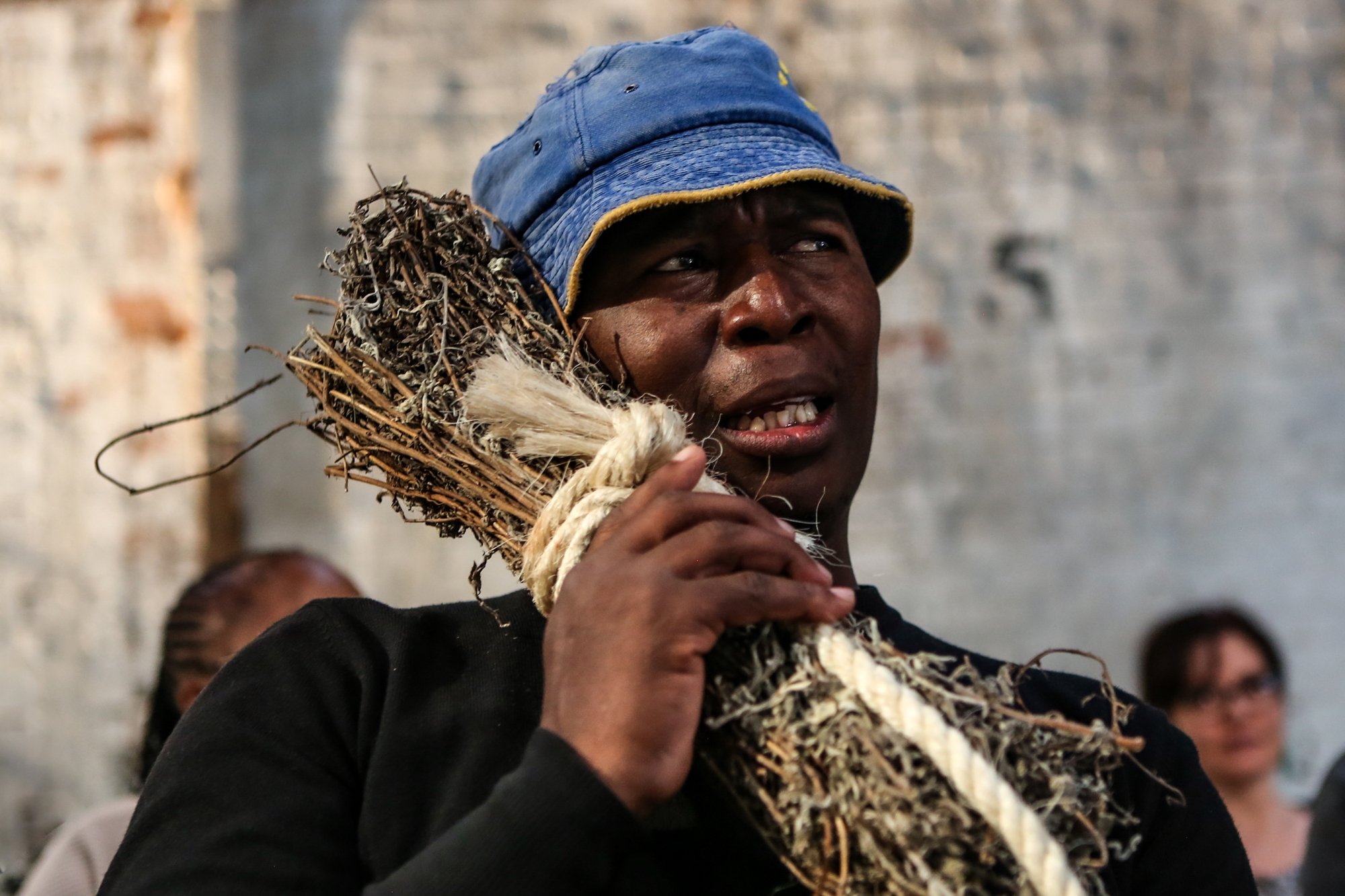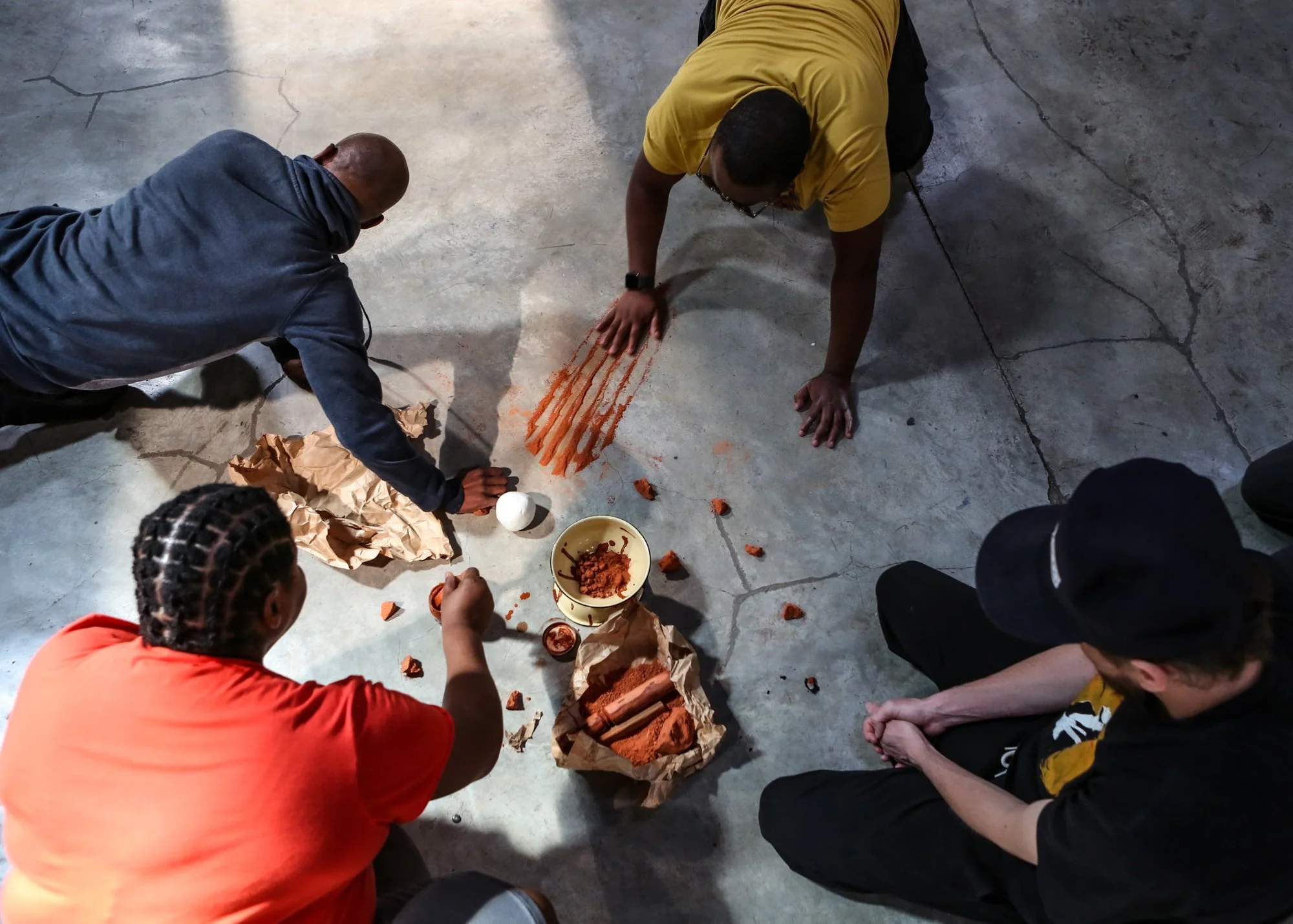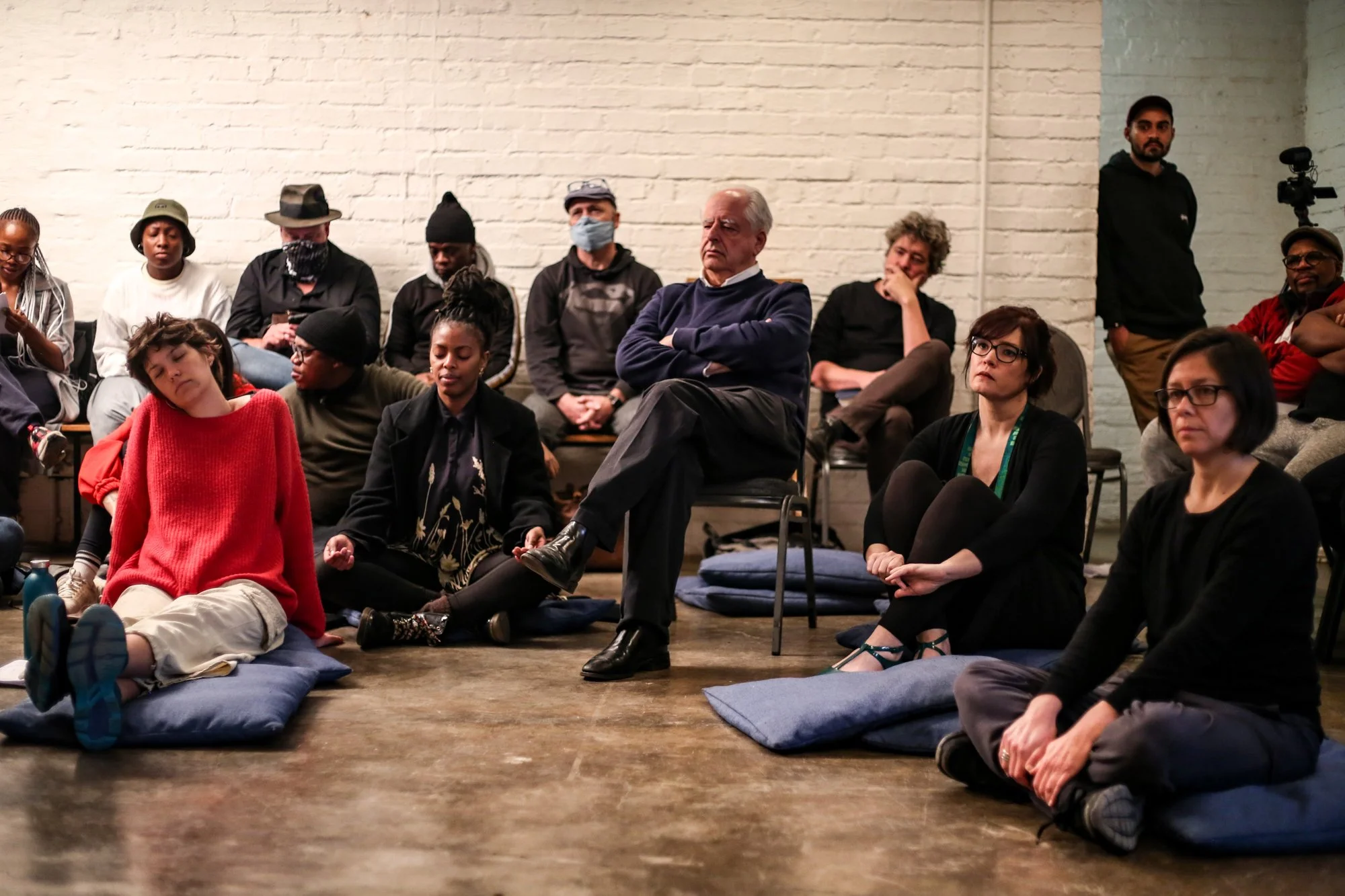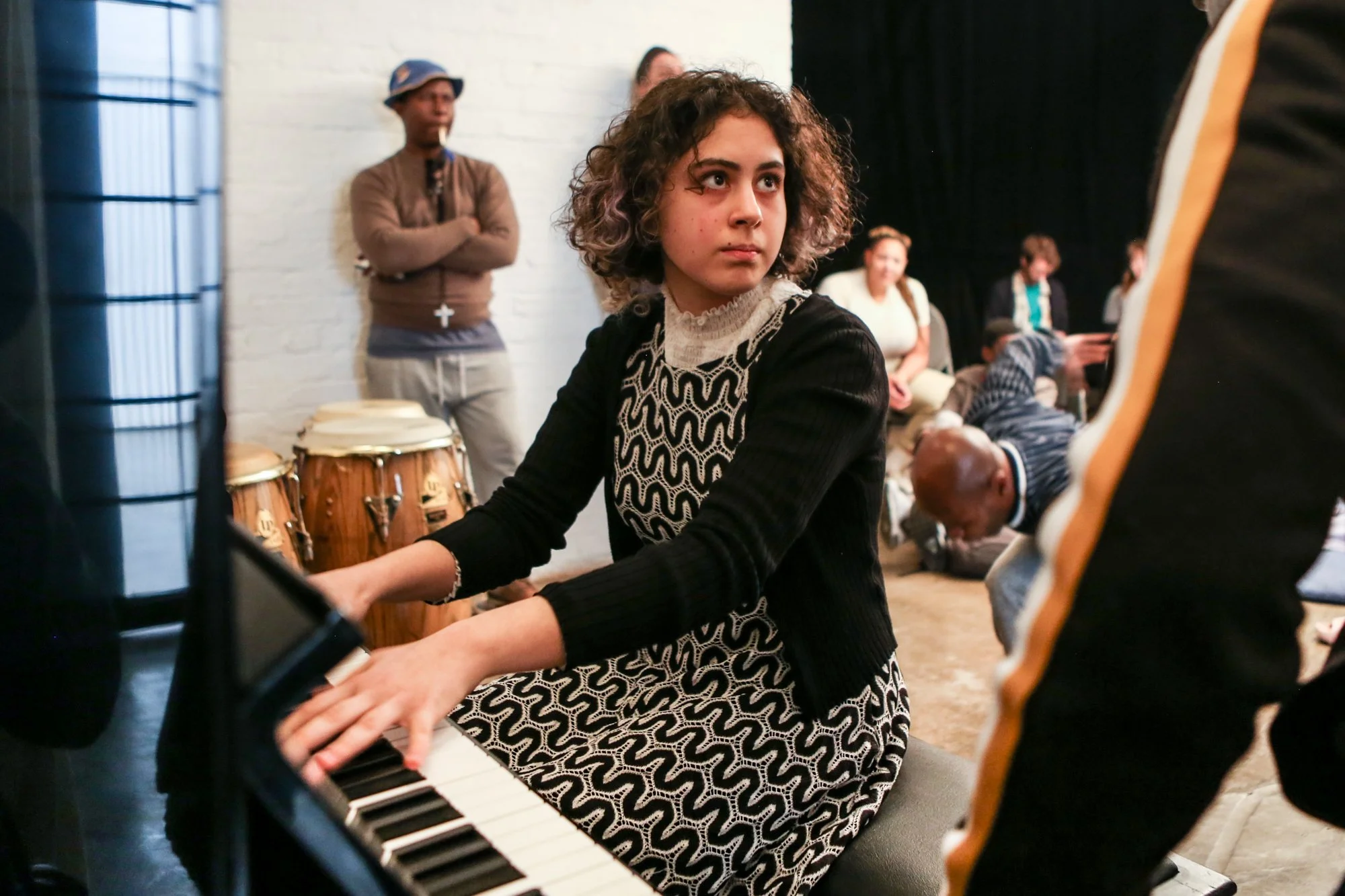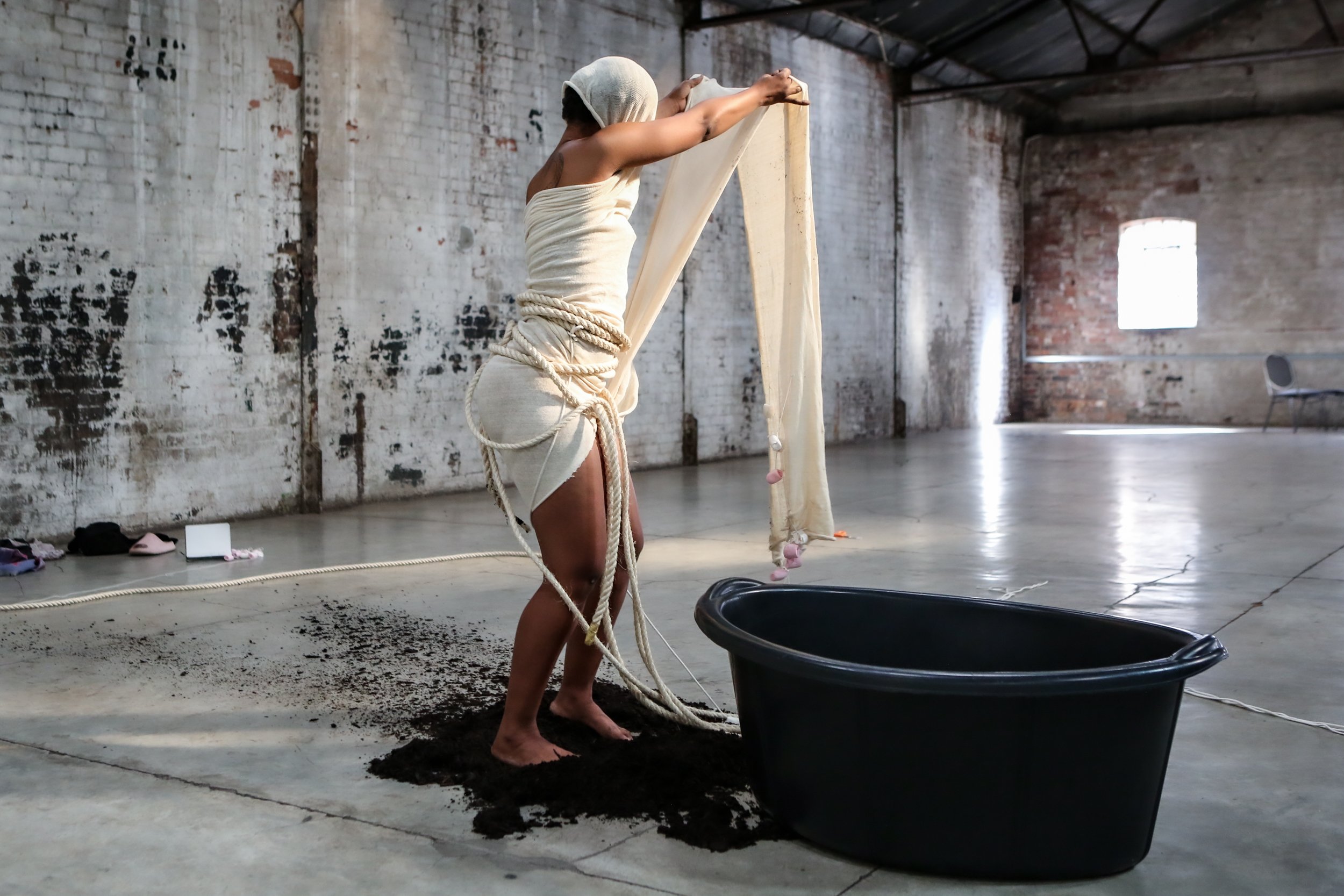E a re ngaka kgolo go retelelwa, go alafe ngakana.
If the good doctor can’t cure you, find the less good doctor.
In many ways, The Centre for the Less Good Idea has its origins in the act of translation. This is evident in its name, a grammatically unwieldy and intriguing phrase inspired by a Tswana proverb, and also in its ways of working – embracing and building upon failures, misunderstandings, impulses and interdisciplinary explorations in pursuit of the secondary or the peripheral idea.
So, perhaps it’s natural that its latest Season focuses exclusively on translation. By inviting visual artists, writers, musicians, dancers, linguists, theatre-makers and performance artists to respond to this central provocation, Season 9 of The Centre explores the myriad ways in which we employ, engage with, or experience translation in our daily lives.
Season 9 is co-curated by Cape Town-based theatre-maker, researcher, educator and Artistic Director of Mud&Fire Parables, Mandla Mbothwe; and choreographer, performer, educator and Momenteur of SO | The Academy for the Less Good Idea, Athena Mazarakis. Together with the Season’s invited artists, Mazarakis and Mbothwe have tested dreams, spirituality, ancestry, emotion, identity, space and language through the literal and conceptual framework of translation.
All of this has taken place over the course of three separate workshops of various durations, structures and intentions. Workshops, since the Centre’s inception, have been central to its process of generating new artistic work. It is in these workshops that the substance and material of the Season is created and developed. Going into Season 9, Mazarakis and Mbothwe were deliberate in their structuring of these moments as equal parts generative and reflective.
The first workshop took place in April 2022 over the course of four days. Here, the curators introduced a range of exercises and prompts with the intention of surfacing new material for performance as well as new ways of making sense of the act or idea of translation. Exercises in linguistic and physical translation, free-writing, instruction and improvisation characterised much of the first workshop. In particular, an exercise in exploring one’s name – its meaning, its history, musicality and form – allowed the tentative act of collaborative creation to be undertaken with a particular level of intimacy and introspection.
As something of a counterpoint to the more metaphysical readings of translation, the introduction of what Mbothwe refers to as “life elements” – earth, fire, water, wind – to the space allowed for an organic, material engagement with the provocation. As a result, many of the early explorations for Season 9 are deeply intimate and tactile works that channel water, soil, imphepho, chanting or the use of the breath to grapple with notions of dreams, identity, personal history and erasure.
The building of the village, and listening as a vital tool
Such substantial themes require a gentle touch and the simple, but deliberate act of listening became a vital tool in this regard. Listening to oneself and to others, explains Mazarakis, is the foundation of translation. A person cannot begin to translate, after all, if they haven’t heard anything.
“We put a big emphasis on that, on hearing each other, meeting each other, being cognisant of the multiple voices in the room, the multiple languages in the room, the multiple cultural backgrounds, and trying to really bring people into dialogue with each other.”
Naturally, this kind of process surfaces the problematics and the challenges of translation, too, creating further avenues of exploration. Discovery and disagreement, conversation and mispronunciation, all of it becomes rich and malleable material in the context of the workshops.
But listening also requires a certain degree of empathy and generosity if it is to be productive. Here, Mbothwe focuses on what he refers to as “the building of the village”, drawing on the tradition of oral storytelling. One of the things that makes this kind of storytelling so successful, he says, is that the relationship between the performer and the audience is established long before the performance begins. The person in the audience is a family member, a friend, or someone who has a personal relationship with the storyteller.
“The person who’s performing is no stranger to those watching and listening. They’re an aunt or a grandmother, you understand? So, in addition to this unique process of ideation that we can engage with through the workshops and the theme of translation, what made those workshops so important was that, early on, we were no longer strangers to one another. And we worked very deliberately on that.”
Cross-continental collaborations
In addition to the Season’s invited artists, the first two days of the initial workshop saw the participation of 12 artists from Europe, the Mediterranean and Africa as part of the Octopus Programme, a guided research-based educational programme of which The Centre is a main collaborator.
The Octopus participants fully immersed themselves in the workshop process, from the morning warm-up sessions to the exercises and improvisational sessions. The presence of several “foreign-language” speakers from countries outside of the African continent also provided a unique contribution to the space and the way participants were able to think about the act, the process and the project of translation.
Reflecting on these two days, Director of The Centre, Bronwyn Lace explains that, despite the various geographic, linguistic and cultural differences, what was most evident was “that we shared a culture of empathy, intimacy and trust. That we prized questioning and risk-taking over being polished or complete and that, rather than insisting artists are correct or complete, we simply asked artists to be present. I believe it is due to this shared approach that the resulting two short but intensive days together were generative and generous for both the organisations and the artists.”
One of these generative moments was born from an organic, improvisational session with the pitch-perfect Vienna-based pianist Maya Muratoglu. What began as the act of translating a participant's name, musically, soon grew into a singular, collaborative moment – an ensemble performance dealing with the complexity and simultaneity of translation. Dreams, prose, vocals, movement and dialogue emerged, and the improvisation developed into an ensemble of rich performative vignettes.
In this way, the ensemble – which is planned to feature in the Season as one of two ensemble performances – serves as an example of the kind of processes that are fostered and facilitated by The Centre. Through this improvisatory moment, everyone is present, each artist contributing a single but vital component to the greater ensemble, held always by the trust and generosity of their fellow participants. Another ensemble performance featuring the Johannesburg-based choir Duduza Serenade is also planned, with the possibility of it taking on the structure of an immersive and interconnected journey framing the opening programme of the Season.
Identifying emergent threads
Following a weekend-long workshop at the end of July – a brief, but generative workshop that also saw the choir being formally welcomed into the Season – the third and final Season 9 workshop took place from 5 to 9 September. It was here that many of the early iterations and concepts that emerged in April began to take shape.
This time around, while new ideas and moments emerged, there were no specific exercises towards the generation of new material. Instead, Mbothwe and Mazarakis chose to focus on the emergent works at hand, acting as roving curators and external eyes to the process of creation. Over the course of these five days, they worked with the artists of each identified performance through individual viewings and general showings. For both curators, it became an exercise in identifying, defining or surfacing the emergent themes of the broader Season, informed by the works themselves.
Mbothwe explains that, for him, it was also the time to ask certain questions of the works. “What are the politics of translation? What language must it be translated to and does it need to be translated at all? Do we take it for granted that everyone understands us? Those tensions are always there. As curators, we see these devices as a kind of thread that feeds through the works.”
So, what does a Season of interdisciplinary artistic work that deals exclusively with translation in a South African context look like, exactly? The below paragraph is a selection of notes made during a collective moment of reflection at the close of the Season’s first workshop. In many instances, the images it evokes, the activity it suggests, and the questions it poses can still be located in the works that define the Season:
A mother whispers through a phone, through time. A dancer hangs the right way up above a cluster of confused chairs. The story of the universe, told in miniature. A voice full of thorns. The elegant shape cast by a mouthful of mud. A sonic swell, the greater cacophony. How does one translate in a perfect pitch? 26 letters to describe the universe, or a version of it. How does truth translate? Writing until our wrists ache. The shadow performs in its own language, the performance is not to be seen. The typo makes more sense outside of the page. Who heals the healer? Who edits the translated text? Translation is a palimpsest, it refuses neat interpretation, it welcomes revision.
At the time of writing, threads that pull throughout the fabric of the Season range from the tactility of rope and fabric, to the literal and figurative weight of soil. Sound, either as a by-product, a primary point of inquiry, or even as a pointed absence, is an ever-present notion, as is the intermedial translation and re-interpretation of scores. While there are fewer traditionally text-based performances, contemporary modes of performance harness the language of dreams, memory, names and more to embody and excavate various stories.
There is an emergent cross-pollination in the works, too. Through complementary thematic threads or as a result of the natural porousness generated through the workshop process, many of the works carry narratives and characters that can be translated across individual performances, allowing for each programme to provide something of a journey for audience and performer alike.
The simultaneous act: Creation as translation
In his essay The Translator’s Task, Walter Benjamin puts forward the idea that to translate is “to find the intention toward the language into which the work is to be translated on the basis of which an echo of the original is awakened in it.” To translate is to rewrite, he says, and in this rewriting, something new emerges or is liberated from its initial form.
Of course, this also applies to performance. How the translation of language, music, lived experience, or the body itself can lead to the surfacing of intention, emotion or narrative that was not always apparent, or accessible (to artist and audience alike), prior to the act of translation.
But translation, as it occurs in the artistic process, is also an implicit act. It is both a prerequisite and a constant to the act of creation. As Mazarakis explains, “Through the creative act, where experiences, perspectives, questions and insights are carried or borne across into material form, to create is to translate, and to translate is also to create.”
Translation is a simultaneous and ongoing act. Further translations occur each time the work shifts, adapts, changes shape, is viewed, responded to or spoken about by an audience, a curator, or a fellow performer.
In this way, Season 9 of The Centre for the Less Good Idea will continue to go on a journey of translation. Its music, stories, dreams and texts will all matter differently to all those who engage with them, continuing to take on new meaning and resonance long after the Season concludes.
– David Mann
PHOTOGRAPHER | Zivanai Matangi
